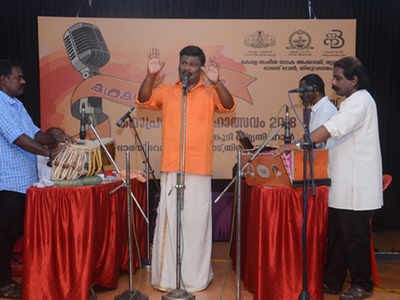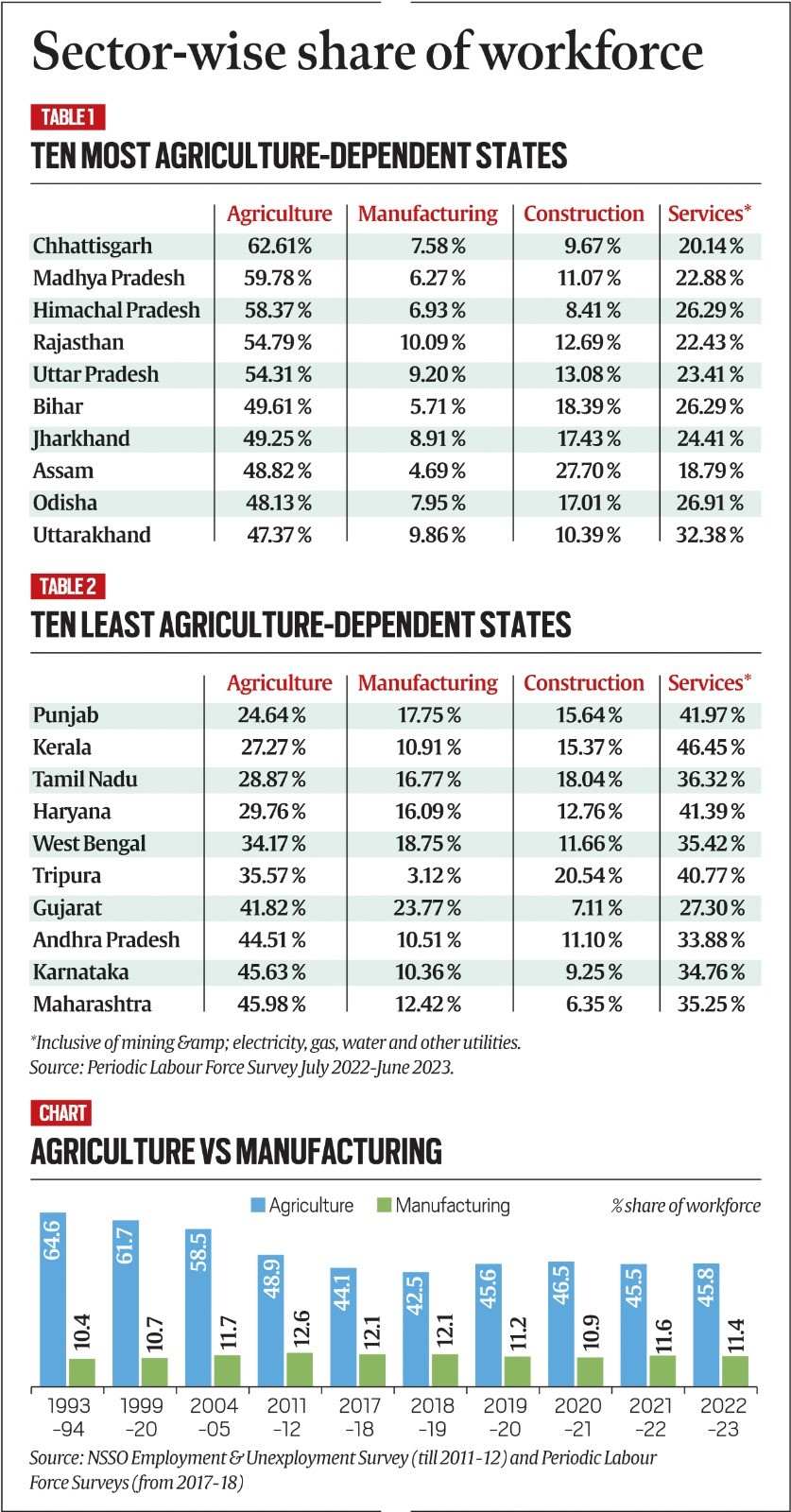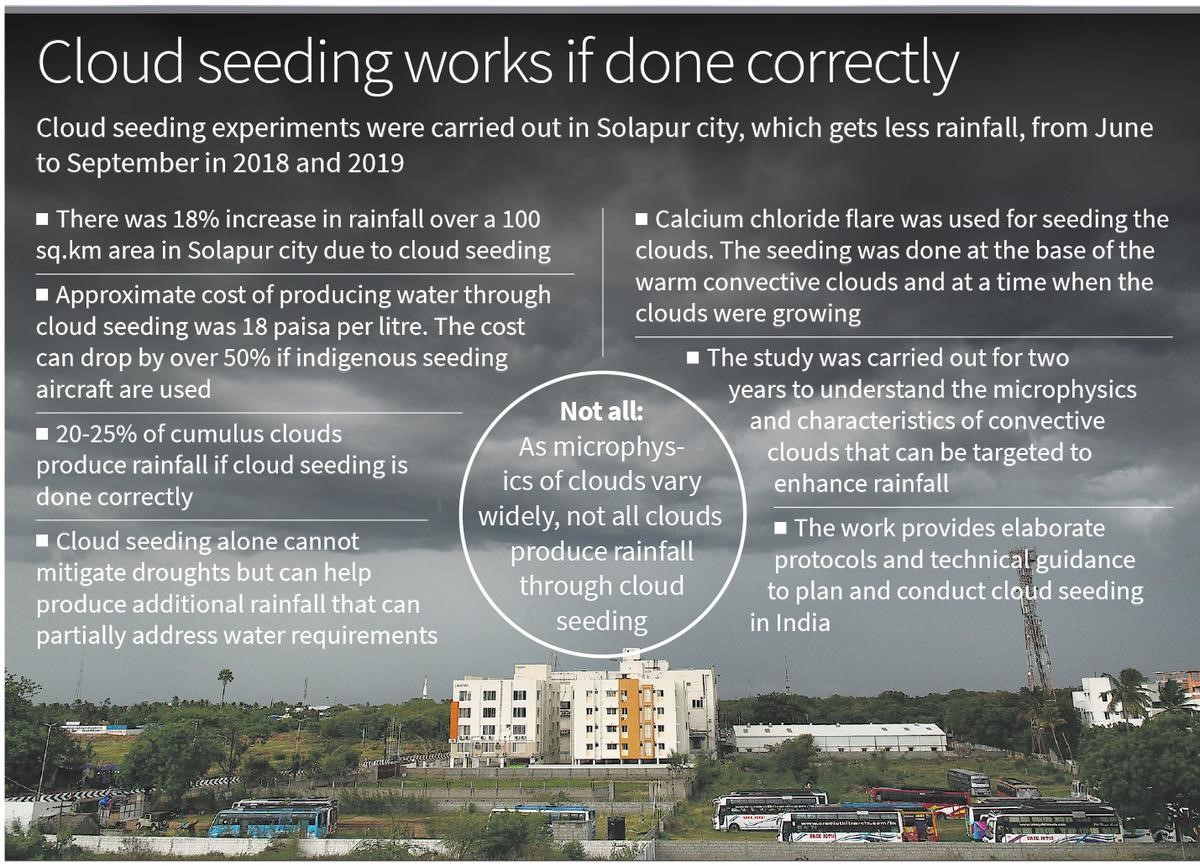1. Kathaprasangam
2. Loksabha Speaker
3. Why the Lewis Model is functional in China but dysfunctional in India?
4. Solapur Experiment and Cloud Seeding Success
5. Jehovah’s Witnesses
Kathaprasangam
Context:
Kathaprasangam, originating as a means to convey tales of oppression, untouchability, and human resilience, has transcended time and found a renewed relevance in the digital era, captivating a diverse audience.
Kathaprasangam:
- Kathaprasangam, a traditional performing art from Kerala, rose to prominence during the mid-20th century, with its roots tracing back to Kumaranasan (1873-1924), a Malayalam poet dedicated to educating and motivating marginalized communities.
- Inspired by the principles of Sree Narayana Guru and his poetry, it emerged a century ago, focusing on themes of societal oppression, untouchability, and human triumphs.
- Combining prose and song, accompanied by the harmonium and tabla, Kathaprasangam uses storytelling as its core. Young artists compete in this discipline, with their performances influencing their advancement.
- This art form is renowned for its capacity to address societal issues directly and urgently.
Relevance in the Modern Context:
- Kathaprasangam, which originated as a response to casteism and superstitions, holds even greater importance today.
- In a world where religious identities are being asserted with violence, endangering social harmony, Kathaprasangam serves as a poignant reminder of the need for unity and understanding.
Despite the rise of contemporary entertainment forms, it continues to attract young audiences eager to engage in story-sharing through modern media platforms.
Loksabha Speaker
Introduction
- The Speaker serves as the Presiding Officer or Chairman of the Lok Sabha. Articles 93-97 encompass the regulations pertaining to the role of the Presiding Officer in the Lok Sabha.
- The Lok Sabha speaker is selected through a simple majority vote among all Members of Parliament.
- Any Member of Parliament is eligible to be nominated for the position, although it is typically the candidate from the ruling party or the party with the majority that assumes this role.
- The Speaker holds the constitutional and ceremonial leadership of the Lok Sabha and is its primary representative.
Election and Tenure of Speaker
- Article 93 of the Indian Constitution outlines the process for electing the Speaker and Deputy Speaker. The Speaker is chosen from among the members of the Lok Sabha, and in the event of a vacancy, the Lok Sabha conducts an election to appoint a new Speaker.
- The President determines the date of the Speaker’s election. The Constitution does not impose specific qualifications for the Speaker; the only requirement is that they must be a member of the Lok Sabha.
- However, a strong understanding of the country’s Constitution, legislation, parliamentary norms, and traditions is considered an advantage for the Speaker.
- The Speaker holds office from the date of their election until the first session of the Lok Sabha following the dissolution of the House to which they were elected. It’s important to note that the Speaker ceases to be a member of the House when the Lok Sabha is dissolved.
Role of Speaker
- The Speaker serves as the head of the Lok Sabha, representing the House and safeguarding the powers and privileges of its members, the entire House, and its committees. The Speaker is the primary spokesperson for the House, and their decisions on parliamentary matters are final.
- The powers and duties of the Speaker are derived from three sources: the Constitution of India, the Rules of Procedure and Conduct of Business of the Lok Sabha, and parliamentary conventions, which encompass unwritten or unspecified powers in the Rules.
Powers and Duties of Speaker
- The Speaker is responsible for maintaining order and decorum in the Lok Sabha to facilitate its proceedings, holding the ultimate authority in this regard.
- They serve as the final interpreter of the Constitution of India, the Rules of Procedure and Conduct of Business of the Lok Sabha, and parliamentary precedents within the House.
- Additionally, the Speaker can adjourn the House or suspend its session if a quorum is not met, with a quorum comprising one-tenth of the House’s total strength. While the Speaker does not vote initially, they possess a casting vote in the case of a tie.
- The Speaker is eligible for re-election and presides over joint sittings of the two Houses of Parliament and secret sessions upon the Leader of the House’s request. They also determine whether a bill is a money bill and certify it as such.
- The Speaker is responsible for deciding questions of disqualification of Lok Sabha members based on the Tenth Schedule, and they act as the ex-officio chairman of the Indian Parliamentary Group, facilitating connections between the Indian Parliament and other world parliaments.
- The Speaker appoints the chairpersons of all Lok Sabha parliamentary committees, supervises their functioning, and serves as the chairman of the Business Advisory Committee, the Rules Committee, and the General Purpose Committee.
Resignation and Removal of Speaker
- Typically, the Speaker remains in office throughout the Lok Sabha’s term.
- However, they must vacate their office in one of three scenarios: if they cease to be a Lok Sabha member, if they resign by notifying the Deputy Speaker, or if they are removed by a resolution passed by a majority of all Lok Sabha members.
- This removal resolution requires a 14-day advance notice, and during its consideration, the Speaker cannot preside over the House but may participate in its proceedings and vote initially, except in the event of a tie.
- The Speaker retains their position even when the Lok Sabha is dissolved and continues in office until the newly elected Lok Sabha convenes.
Independence and Impartiality of Speaker
- The Speaker enjoys security of tenure and can only be removed through a Lok Sabha resolution by a special majority.
- Their salaries and allowances are established by Parliament and drawn from the Consolidated Fund of India, exempt from annual parliamentary voting.
- Criticism of the Speaker’s conduct and work in the Lok Sabha is only admissible through a substantive motion.
- The Speaker’s authority in regulating procedures, conducting business, and maintaining order in the House is not subject to any court’s jurisdiction.
- The Speaker’s impartiality is ensured by their casting vote. They hold a prominent position in the order of precedence, ranking seventh alongside the Chief Justice of India.
Panel of Chairpersons of Lok Sabha
- According to Lok Sabha Rules, the Speaker appoints a panel of up to 10 chairpersons from among the members.
- In the absence of the Speaker or Deputy Speaker, any member of the panel can preside over the House and possesses the same powers as the Speaker.
- This arrangement remains in effect until a new panel of chairpersons is designated.
- When a member of the panel is also absent, the House designates another person to serve as Speaker.
- It’s important to note that during the Speaker or Deputy Speaker’s absence, a member of the panel of chairpersons cannot preside over the House.
In such cases, the President appoints a member of the House to fulfill the Speaker’s duties, and elections are promptly held to fill the vacant positions.
Why the Lewis Model is functional in China but dysfunctional in India?
Context:
In 1954, the esteemed economist from Saint Lucia, Sir William Arthur Lewis, introduced a revolutionary theory.
This theory proposed that developing countries with an excess of labor could achieve substantial industrialization by shifting labor from subsistence agriculture to the expanding manufacturing sector.
Nevertheless, India’s experience over the years has shown that the actual unfolding of this model did not align precisely with Lewis’s original vision.
Understanding the Lewis Model
- Lewis’s Theory: Sir William Arthur Lewis’s influential essay, “Economic Development with Unlimited Supplies of Labor,” suggested that countries with surplus labor could industrialize by offering wages just sufficient to lure workers away from family farms.
- Key Assumptions: The model assumed that higher manufacturing sector wages would be commensurate with the increased output, leading to limitless growth in industries.
Limitations: The primary impediments to this labor shift were the limited availability of capital and natural resources, which these countries often lacked relative to their population.
India’s Divergence from the Model
- Historical Context: In the early 1990s, around two-thirds of India’s workforce was engaged in agriculture.
- Limited Manufacturing Impact: Although the share of agricultural employment decreased to 48.9% by 2011-12, the share of manufacturing employment only marginally rose from 10.4% to 12.6% during the same period.
- Recent Trends: Due to the Covid-19 pandemic, the agricultural sector’s share temporarily increased, reaching 46.5% in 2022-23, while manufacturing’s share dropped to 11.4% in the same year.
- Shift within Subsistence Sectors: Labor migration predominantly occurs within subsistence sectors like low-paid services and construction, rather than moving towards manufacturing or high-productivity services.
State-Level Variations
Exception in Gujarat: Gujarat stands out with nearly 24% of its workforce engaged in manufacturing, which mirrors Lewis’s model. However, the state’s workforce in agriculture remains relatively high compared to other states.
Comparing China’s Model with India’s Reality
- China’s Success: China leveraged its surplus rural labor to become “the world’s factory” during the late 20th century.
- Challenges in India: India still has surplus labor engaged in subsistence sectors, but the path to conventional employment opportunities is narrowing.
- Technological Changes: Manufacturing is increasingly capital-intensive, integrating labor-saving and labor-displacing technologies.
- New Economic Development Approach: NITI Aayog is exploring alternative strategies for job creation, emphasizing activities related to agriculture, such as aggregation, processing, transportation, and bio-based industries.
- Opportunities in Bio-Based Sectors: Crop residues, bio-fuels, bio-based products, and supply chain services present potential employment options linked to agriculture.
Conclusion
India’s journey toward economic transformation has deviated from the traditional Lewis model.
The evolving nature of manufacturing and the need for a reimagined labor transition require innovative approaches that consider the country’s unique circumstances and opportunities in sectors beyond traditional agriculture.
NITI Aayog’s exploration of alternative development models signals a shift towards addressing contemporary challenges and promoting sustainable economic growth.
Solapur Experiment and Cloud Seeding Success
Context:
Solapur, a city located on the leeward side of the Western Ghats and facing limited rainfall, experienced an 18% increase in rainfall following a cloud seeding experiment.
About CAIPEEX Experiment
- The Cloud Aerosol Interaction and Precipitation Enhancement Experiment (CAIPEEX phase-4) was initiated to explore the effectiveness of hygroscopic seeding in deep convective clouds.
This experiment yielded an additional 8.67mm of rainfall, resulting in 867 million liters of augmented water availability within two hours of cloud seeding.
Importance of the Experiment
- Amid India’s escalating burden of non-communicable diseases (NCDs, exacerbated by the consumption of pre-packaged foods), informed consumer choices and food safety have become paramount.
- The experiment underscores the efficacy of cloud seeding as a strategy for enhancing rainfall, especially in regions with suitable conditions.
- The research also delves into the cost-effectiveness of cloud seeding, estimating the cost of producing water through this method at 18 paise per liter.
Key Findings and Methodology
In a randomized seeding experiment, 276 convective clouds were chosen, with 150 undergoing seeding and 122 serving as the control group. Selection criteria for seeding targeted clouds with significant liquid water content, vertical motion indicative of cloud growth, and a depth exceeding one kilometer.
- Cloud seeding utilized calcium chloride flares, ensuring optimal dispersion and entry into growing clouds.
- As a result, the seeded clouds produced significantly more rainfall, representing an 18% relative enhancement.
Implications and Future Prospects
- While cloud seeding alone cannot completely alleviate droughts, it can contribute to an 18% increase in rainfall, partially addressing water requirements.
- Moreover, the utilization of indigenous seeding aircraft has the potential to reduce costs by more than 50%, making cloud seeding a more accessible option.
The study has also developed a high-resolution numerical model to assist stakeholders in identifying target locations, suitable clouds for seeding, and effective strategies for enhancing rainfall.
Jehovah’s Witnesses
Tragedy at a Jehovah’s Witnesses Prayer Convention in Kochi
- In the vicinity of Kochi, a Sunday prayer gathering hosted by the Jehovah’s Witnesses sect turned tragic, resulting in the loss of two lives and numerous injuries due to a series of explosions.
Distinctive Beliefs of Jehovah’s Witnesses
- Rejecting the Holy Trinity: The Jehovah’s Witnesses, a Christian sect, hold distinctive beliefs that set them apart from mainstream Christianity. They reject the doctrine of the Holy Trinity, instead worshiping Jehovah as the sole and Almighty God and Creator.
- Views on Jesus Christ: While they acknowledge Jesus Christ as the “King of God’s Kingdom in heaven,” they do not consider him to be the Almighty God.
- Reliance on the Bible: Their religious doctrines are exclusively rooted in the Bible, which they regard as the divine word. This leads them to abstain from celebrating holidays like Christmas and Easter, viewing them as having pagan origins.
The Apocalyptic Beliefs of Jehovah’s Witnesses
- Imminent End of the World: Jehovah’s Witnesses firmly believe that the world’s end is imminent and anticipate the establishment of the “Kingdom of God” to replace human governments and fulfill God’s purpose for the earth.
Origins of the Sect: This religious movement traces its origins back to the 1870s when American pastor Charles Taze Russell initiated the Bible Student movement.
Leadership and Headquarters: The headquarters of the Governing Body of Jehovah’s Witnesses is situated in Warwick, New York, and the primary organization responsible for disseminating their doctrines is the Watch Tower Bible and Tract Society of Pennsylvania, which is also headquartered in Warwick.
Jehovah’s Witnesses in India
- A Growing Presence: In India, there are approximately 56,747 ministers teaching the Bible as Jehovah’s Witnesses. The presence of Jehovah’s Witnesses in India dates back to 1905, with an official office established in Mumbai in 1926 and legal registration obtained in 1978.
- Constitutional Protections: They enjoy constitutional protections in India, including the right to practice, profess, and propagate their faith.
- Landmark Legal Cases: A significant legal precedent occurred in 1986 when the Supreme Court of India granted protection to Jehovah’s Witness children who refused to participate in singing the National Anthem at their school, citing a violation of their fundamental right to religious freedom under Article 25 of the Constitution.
- Medical Accommodations: Notably, in 2020, a Jehovah’s Witness from Nigeria underwent a live liver transplant in a Bengaluru hospital without the use of blood or blood products to accommodate the patient’s religious beliefs.
Challenges and Controversies
- Jehovah’s Witnesses’ Unique Practices: The Supreme Court’s Bijoe Emmanuel ruling acknowledged the unique beliefs and practices of Jehovah’s Witnesses, including their opposition to voting, holding public office, serving in the armed forces, saluting the flag, standing for the National Anthem, and reciting the pledge of allegiance.
International Conflicts: This ruling also highlighted international conflicts between Jehovah’s Witnesses and governments due to their religious beliefs, resulting in lawsuits, violence, imprisonment, torture, and, in some cases, loss of life. These beliefs and practices have led to legal challenges in various countries, including the United States and Australia.





